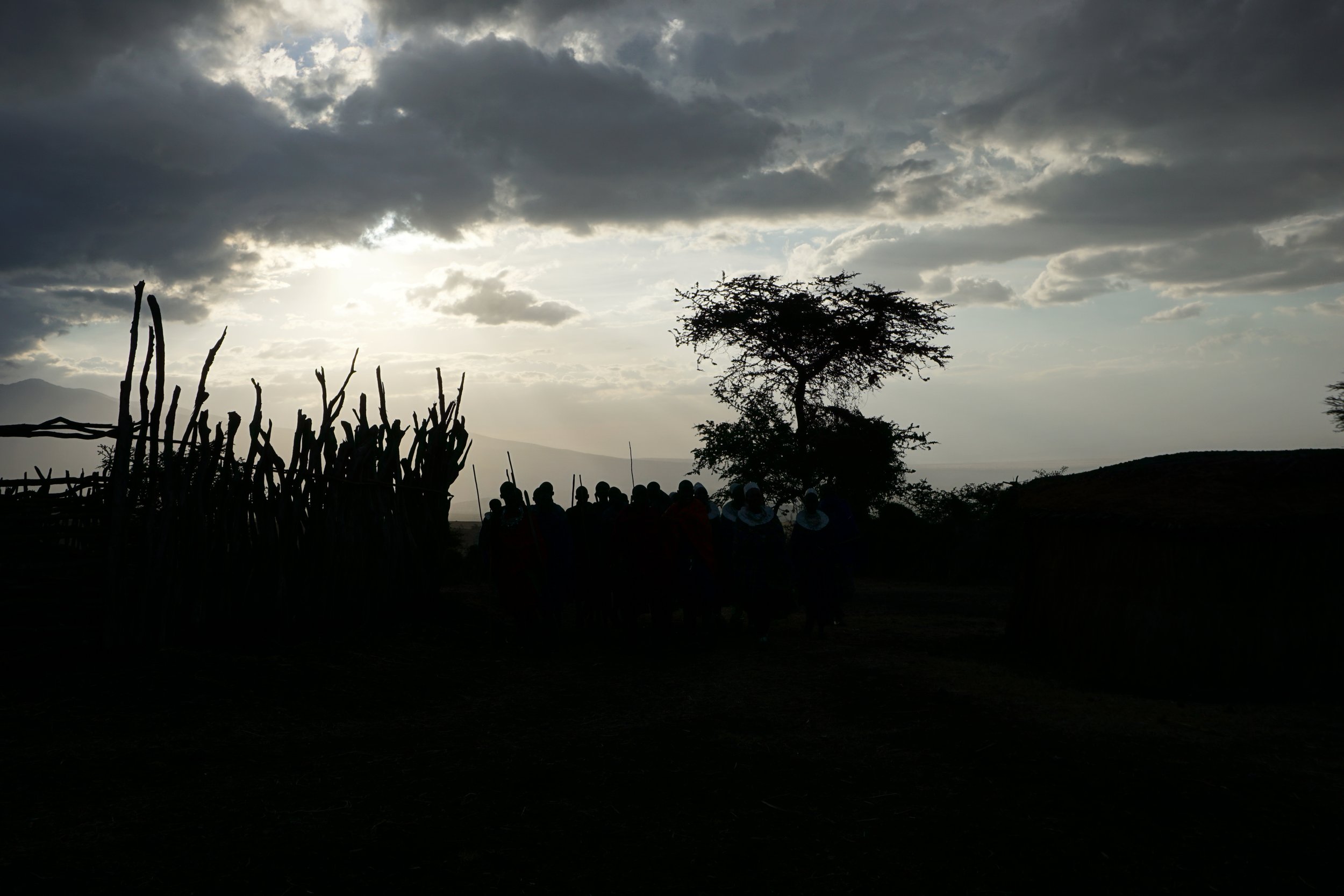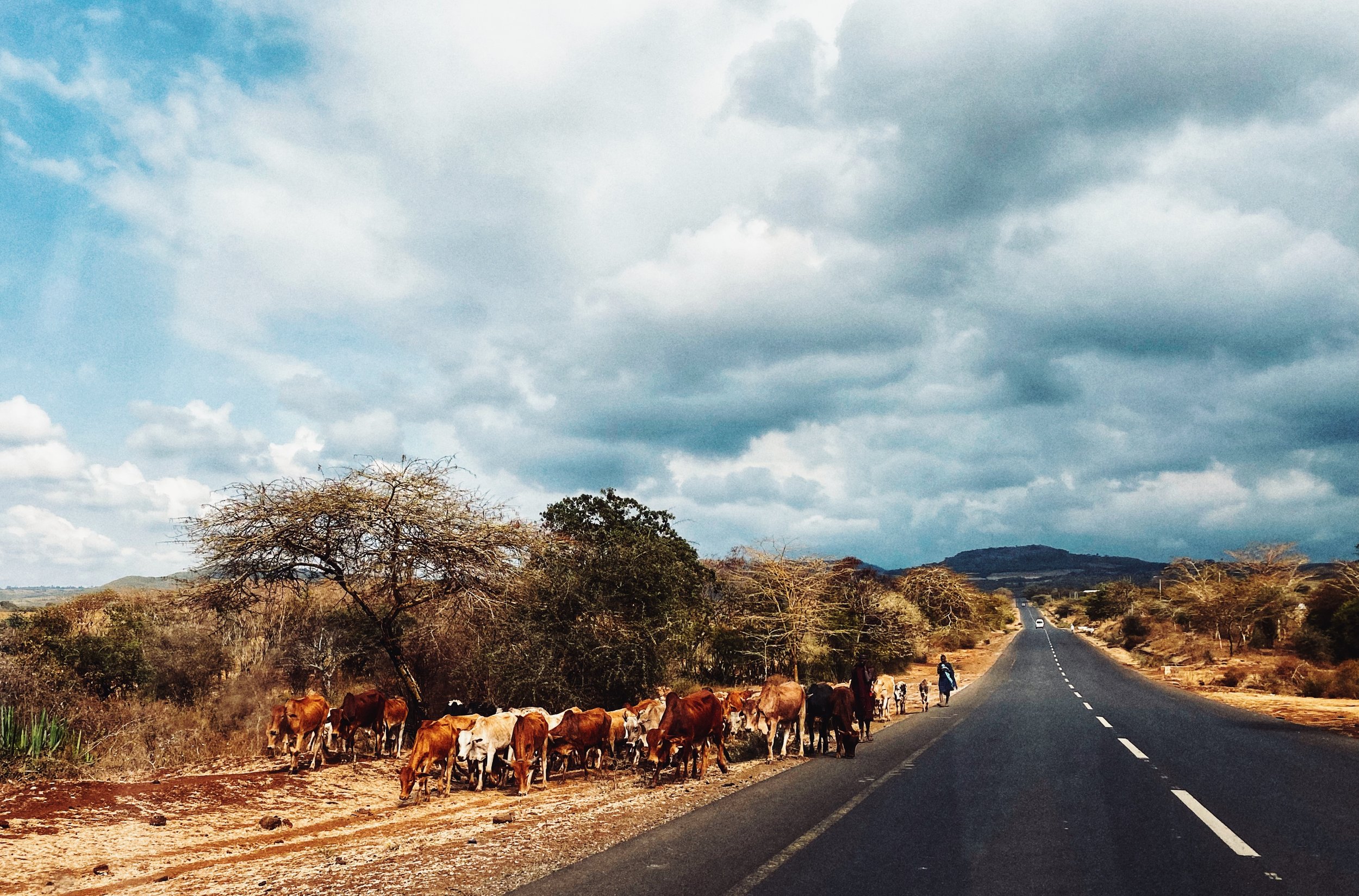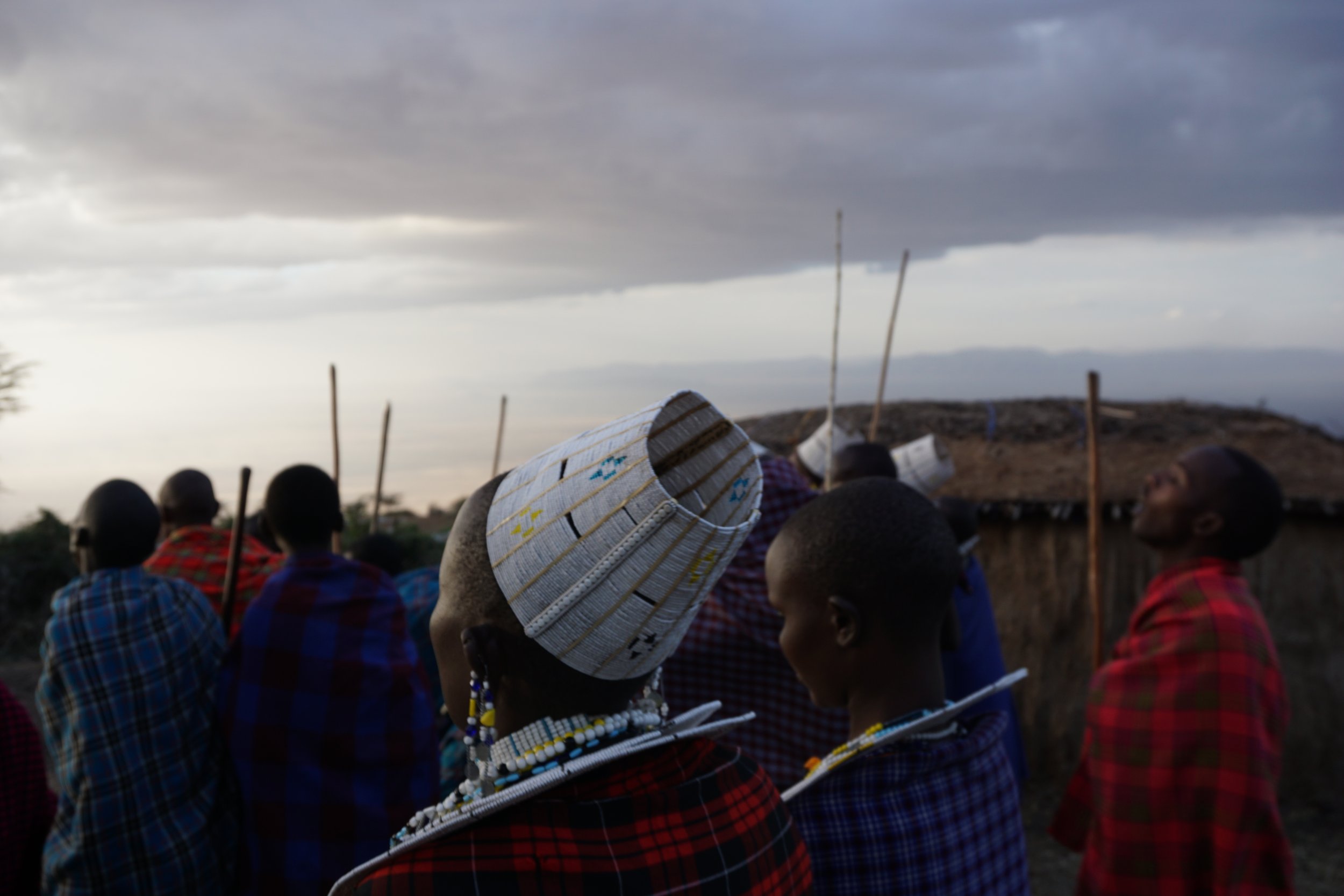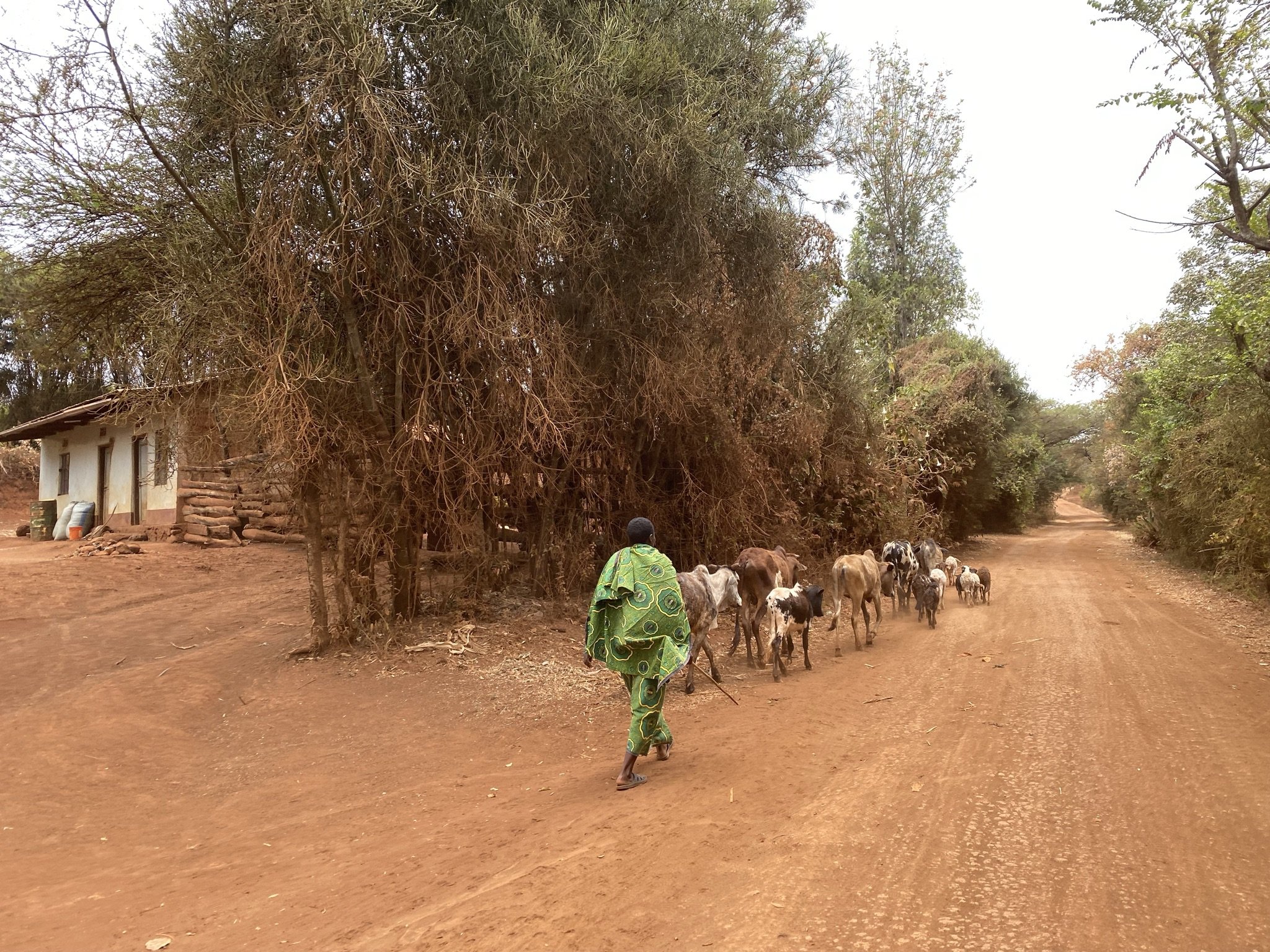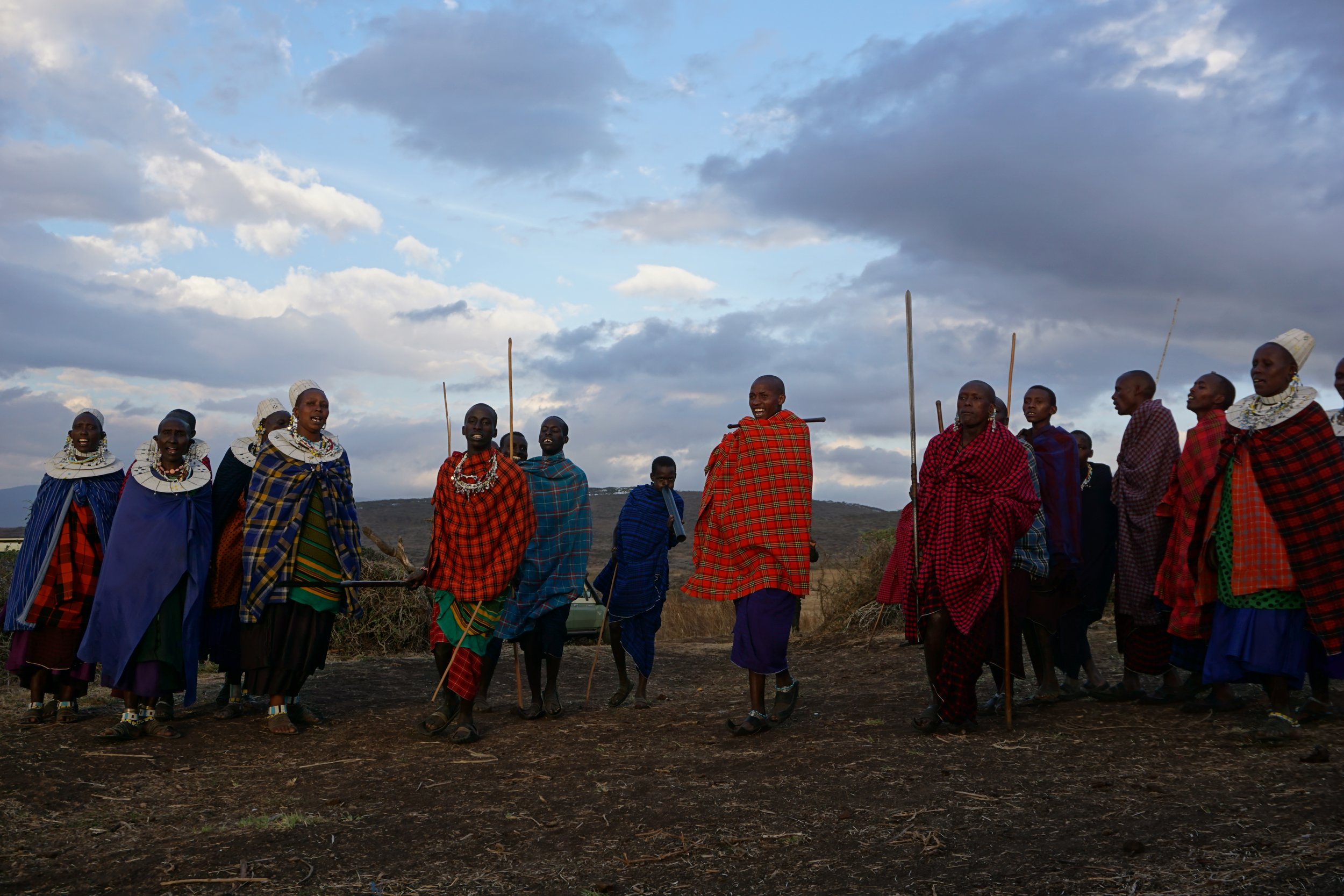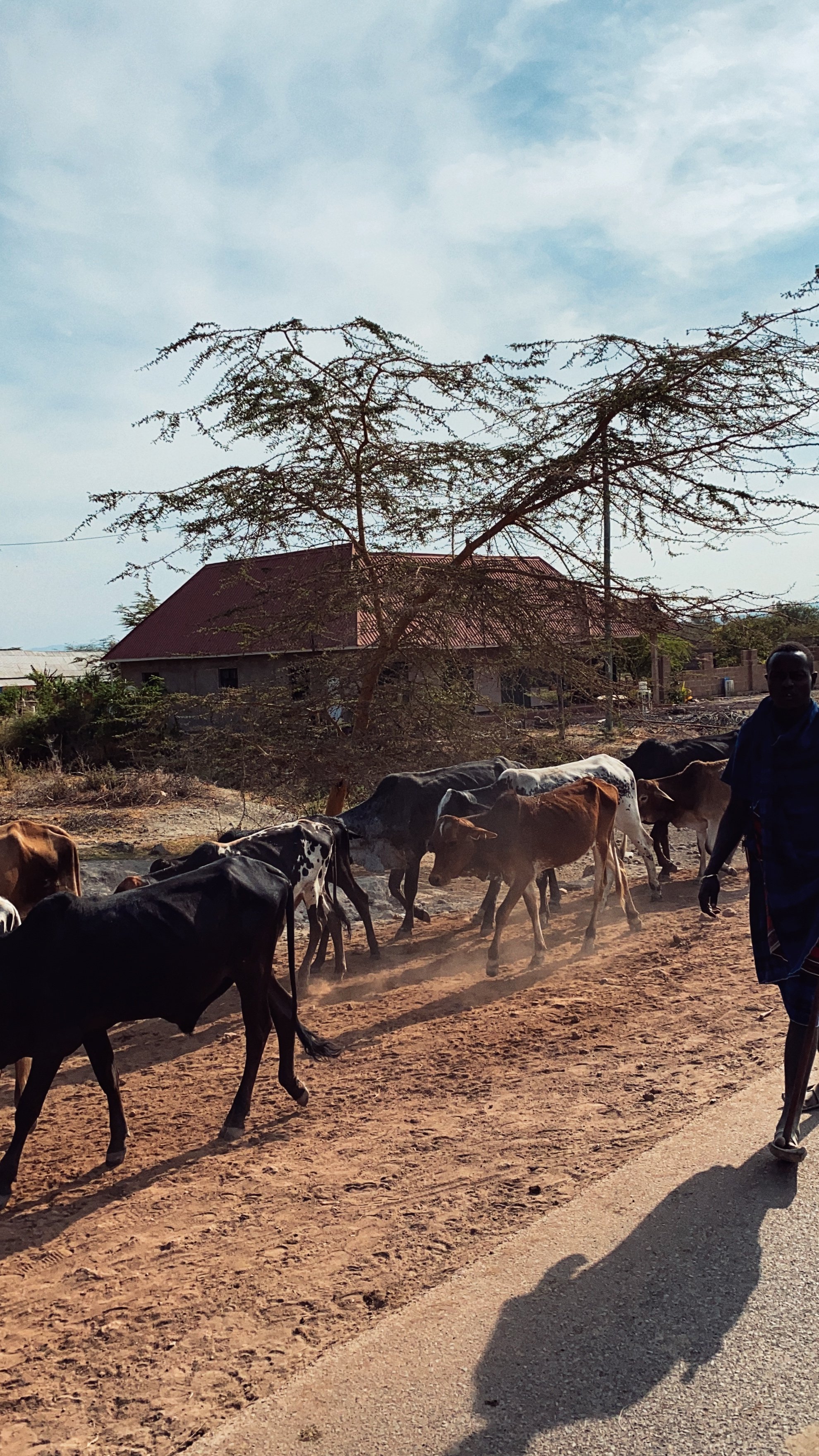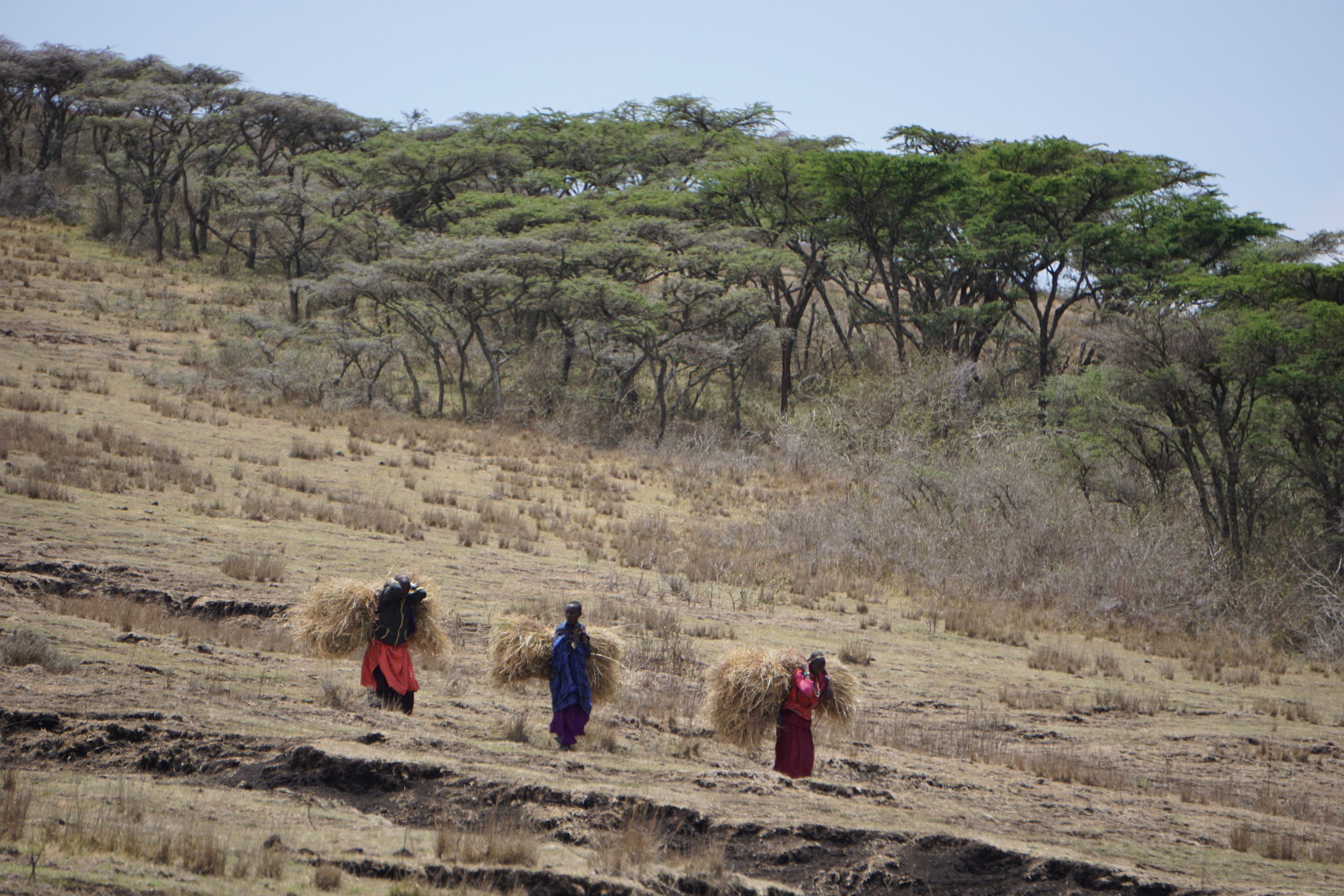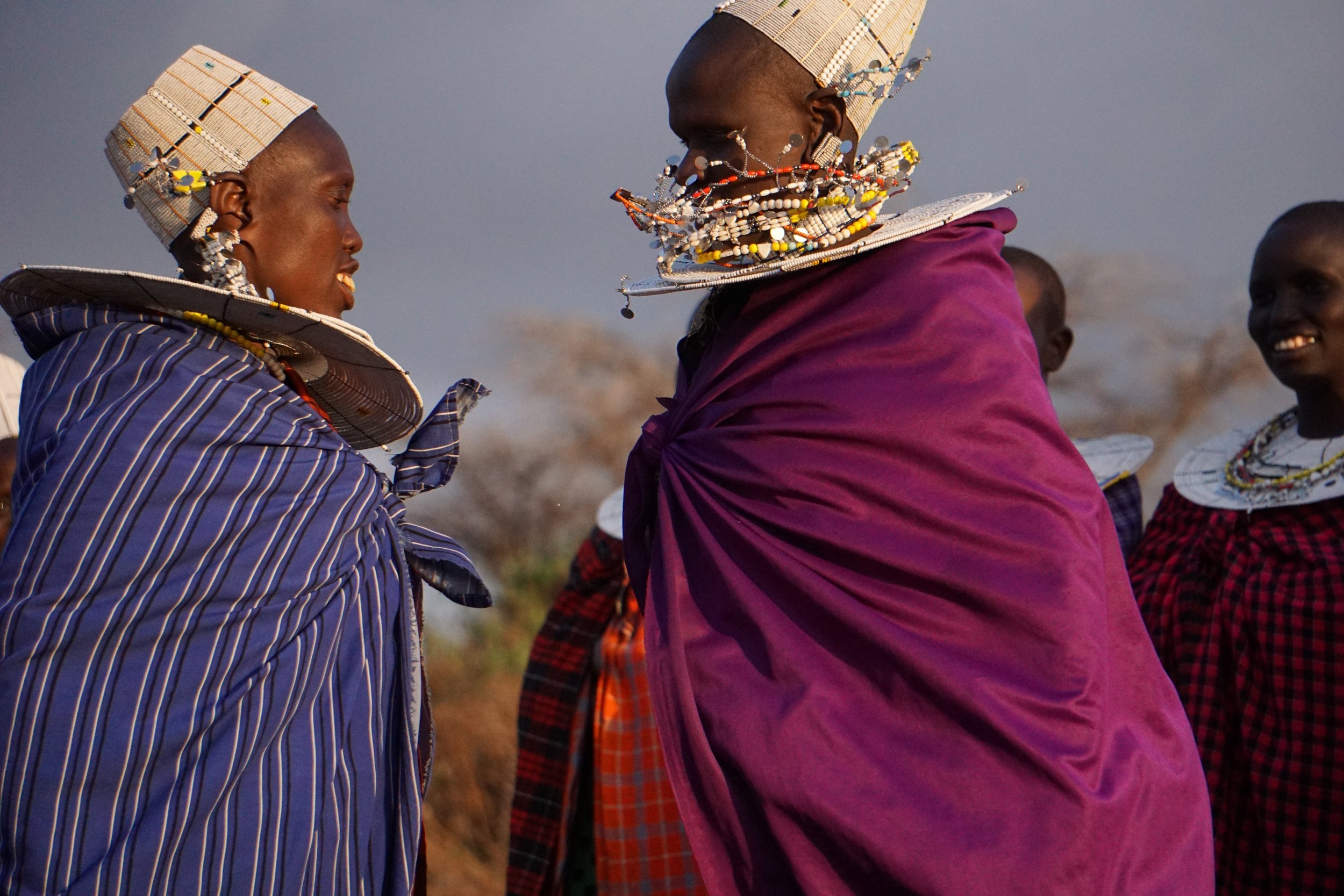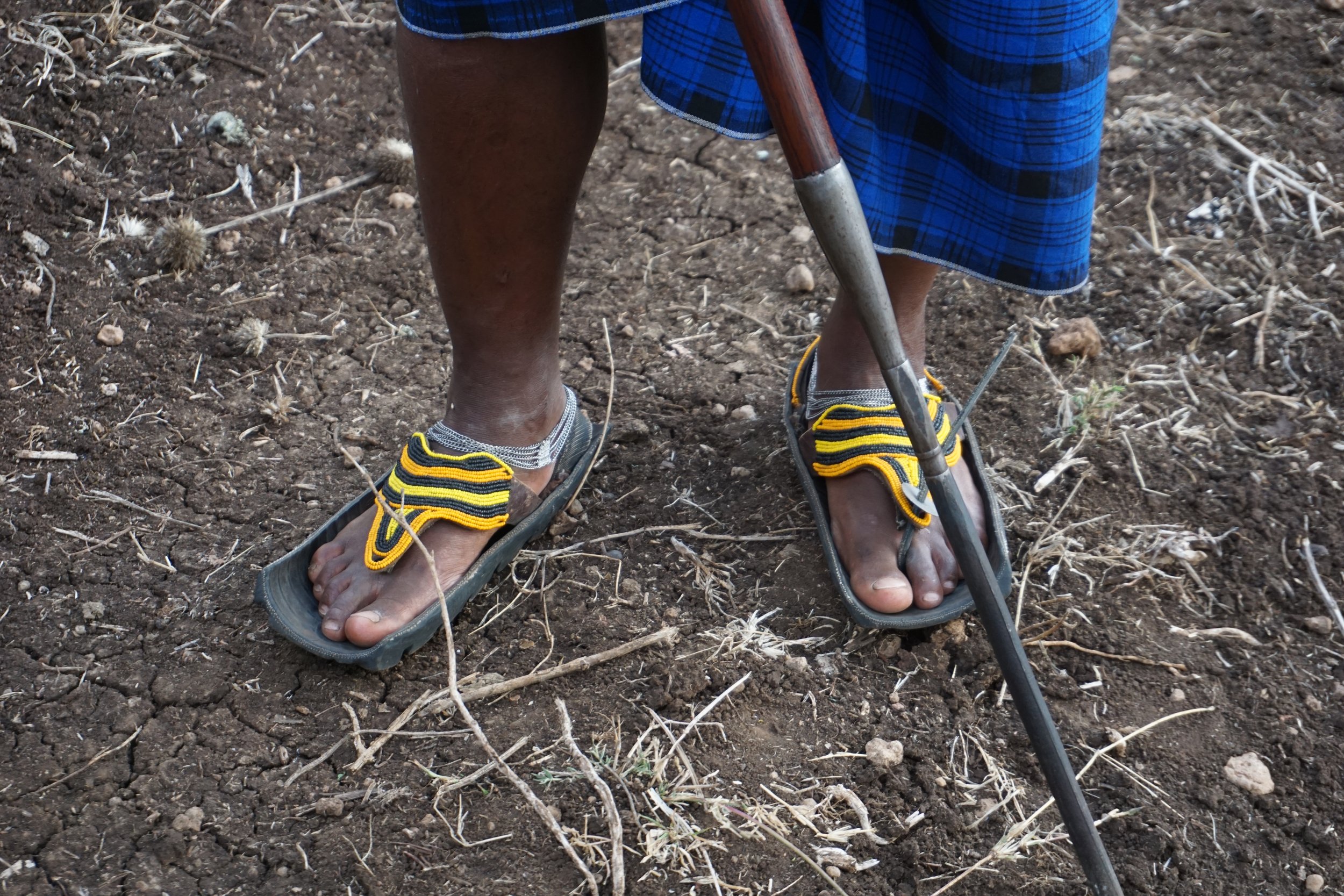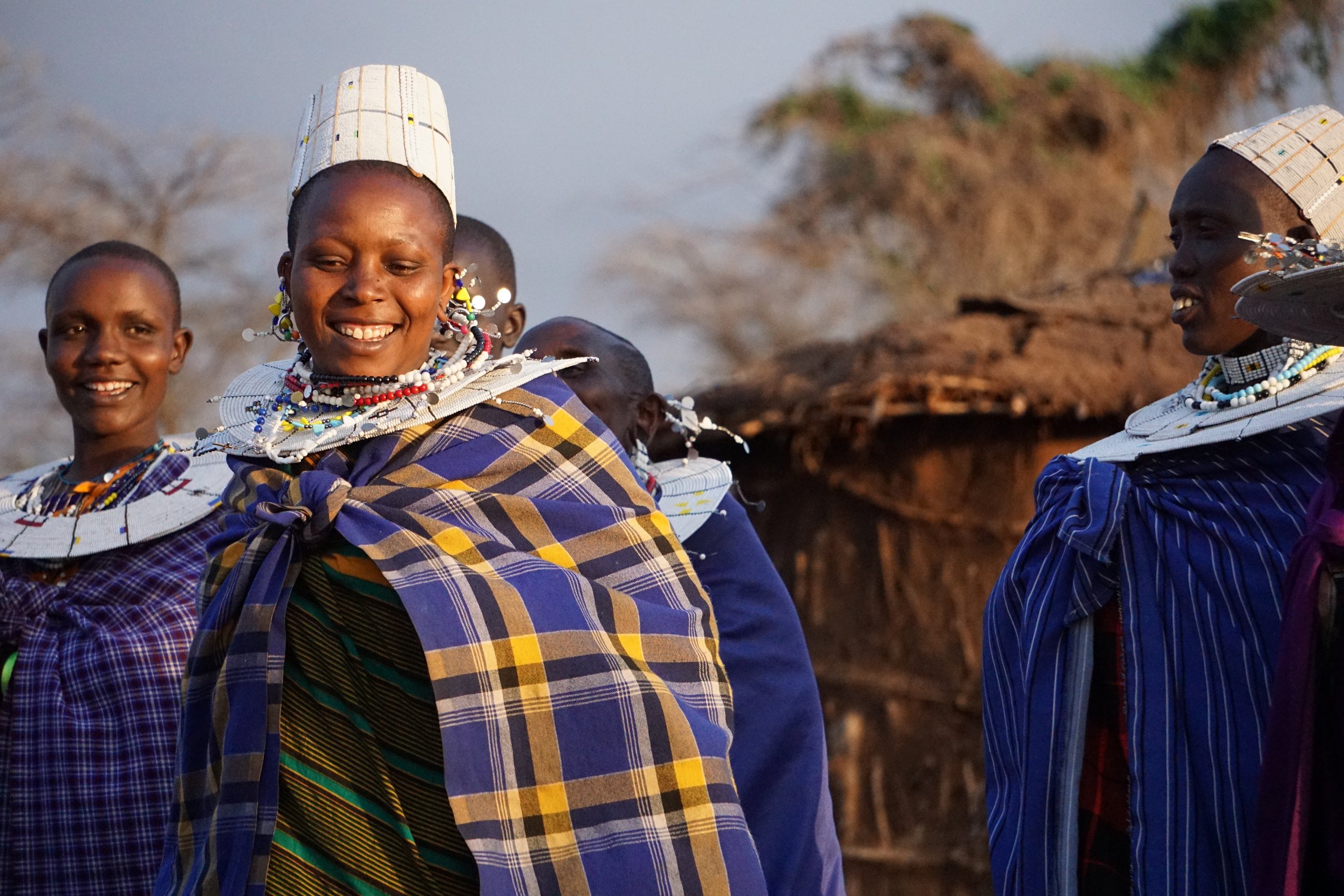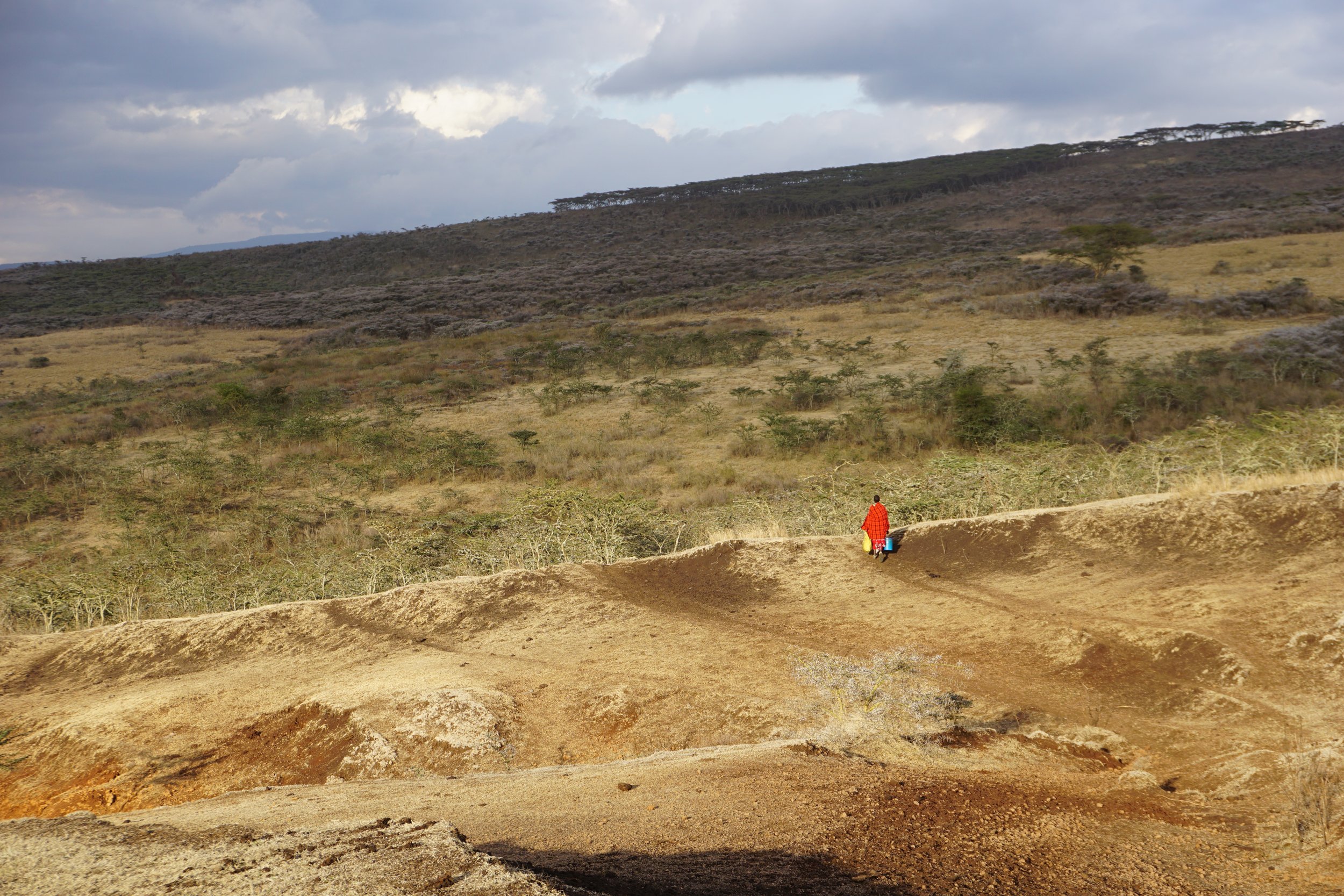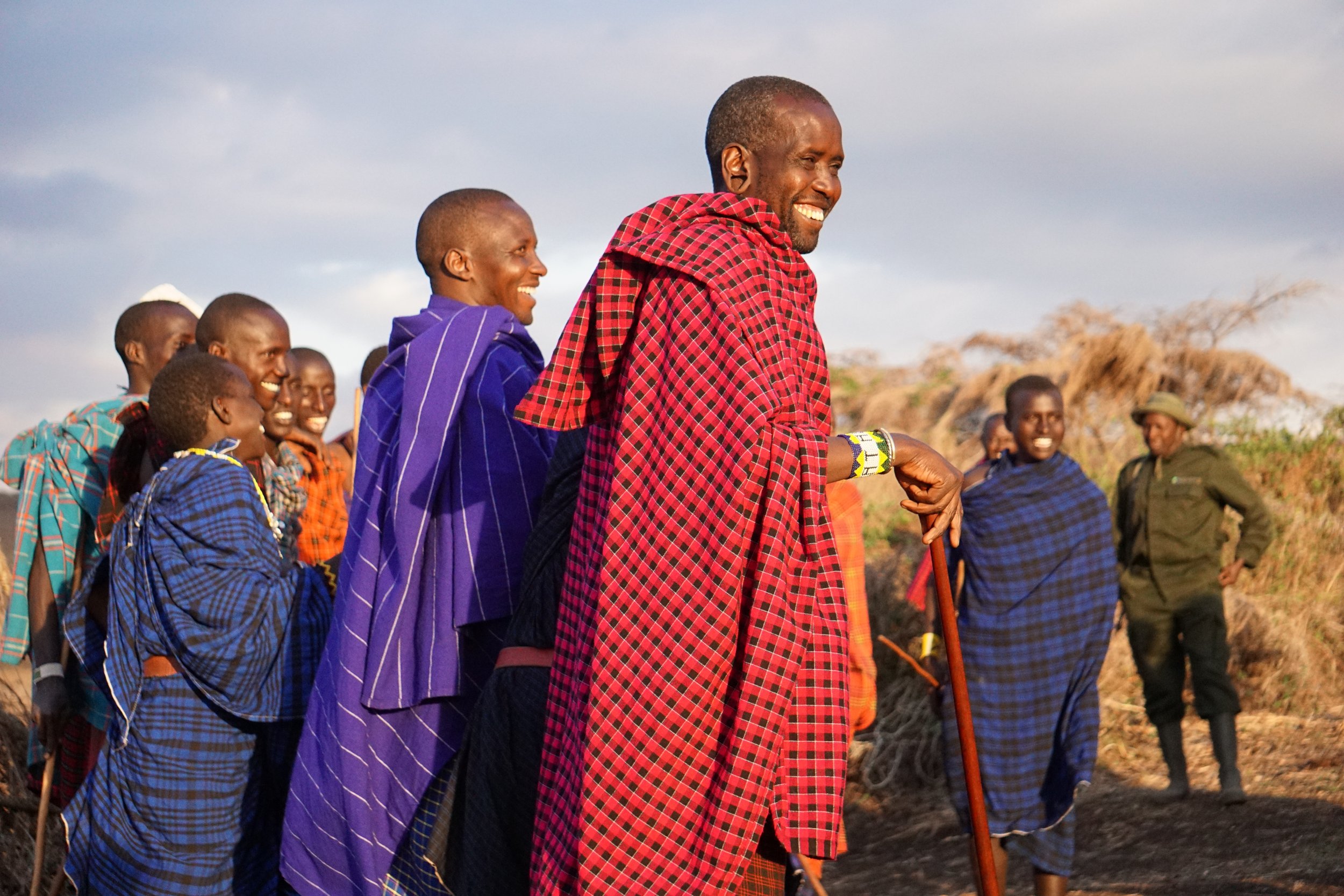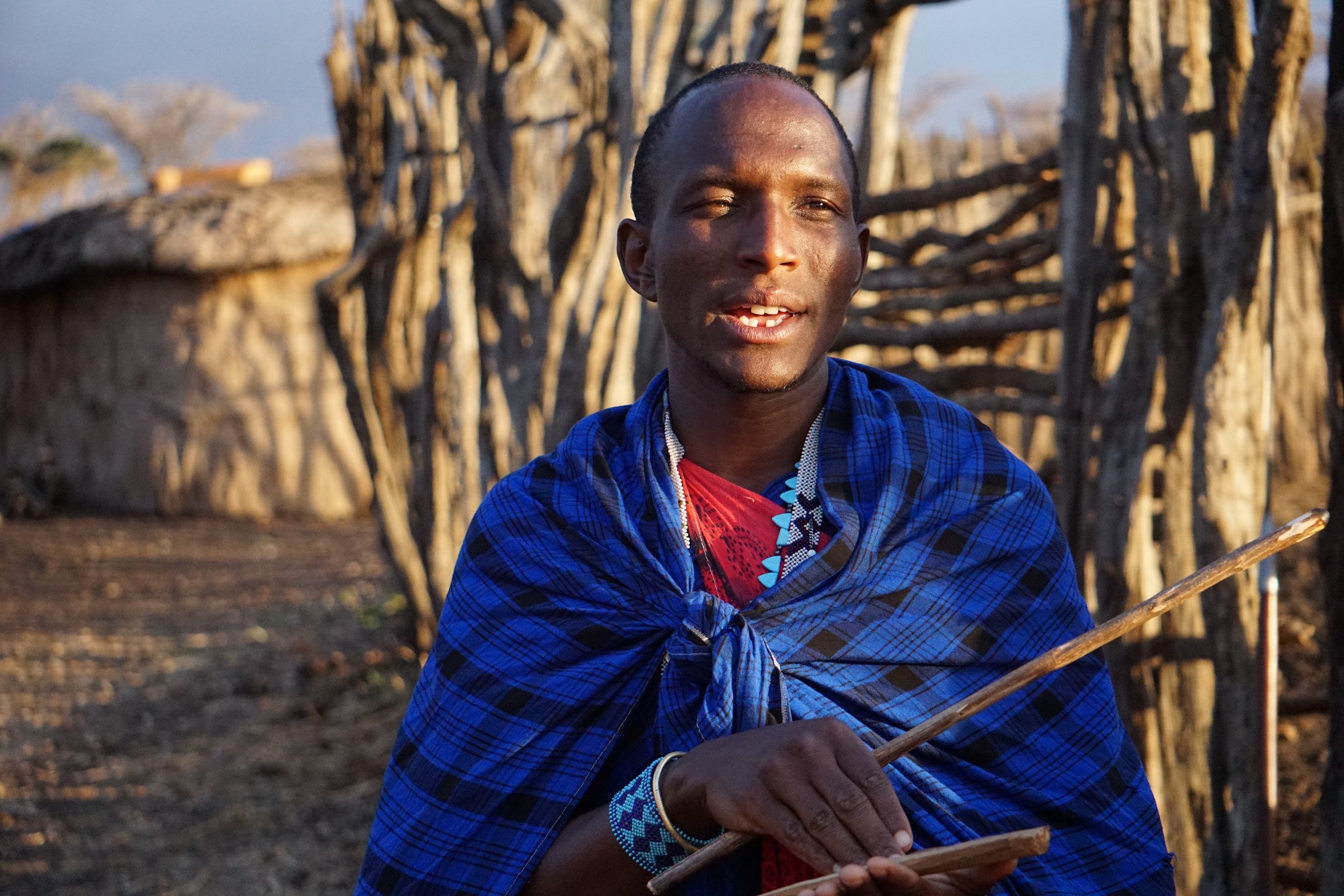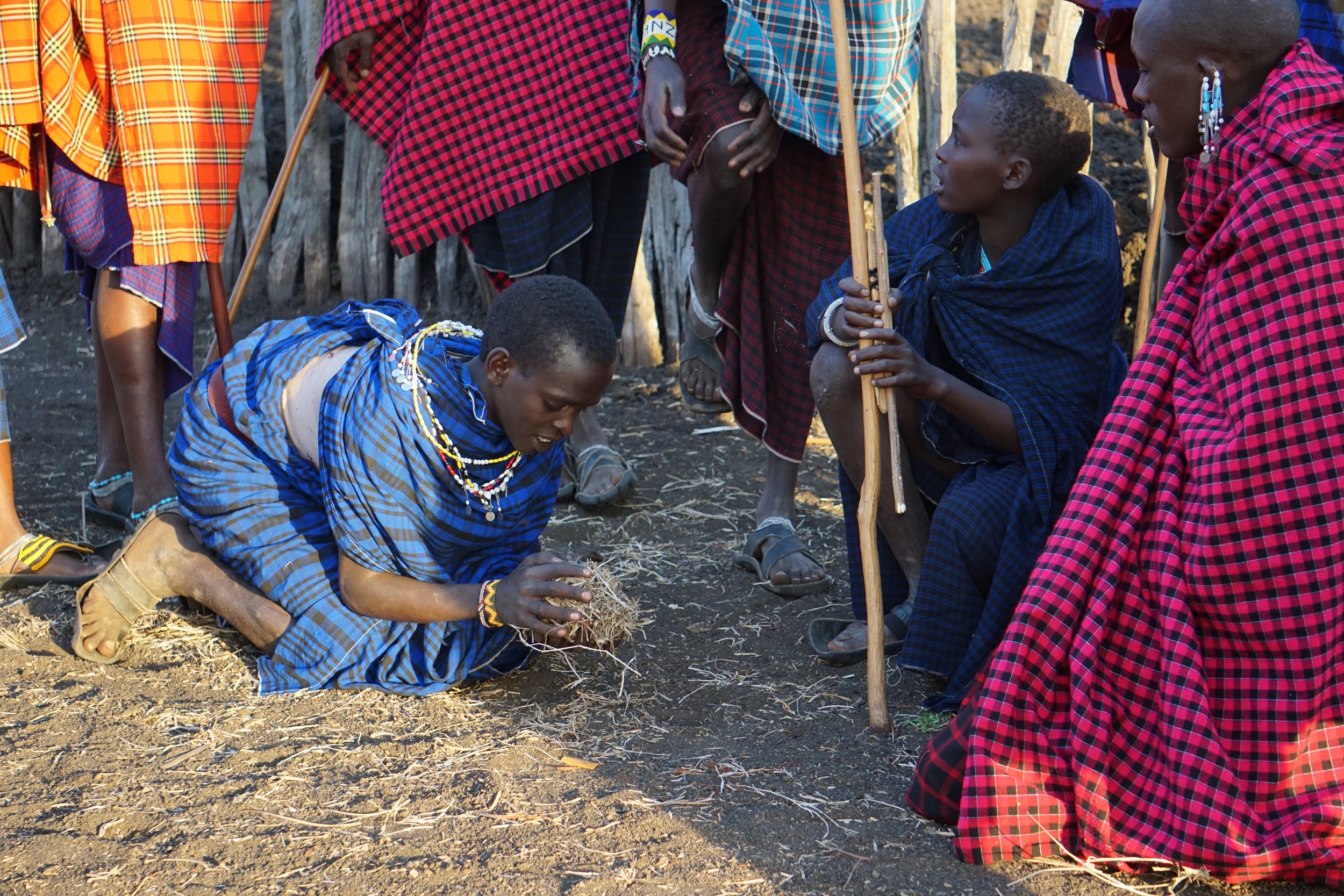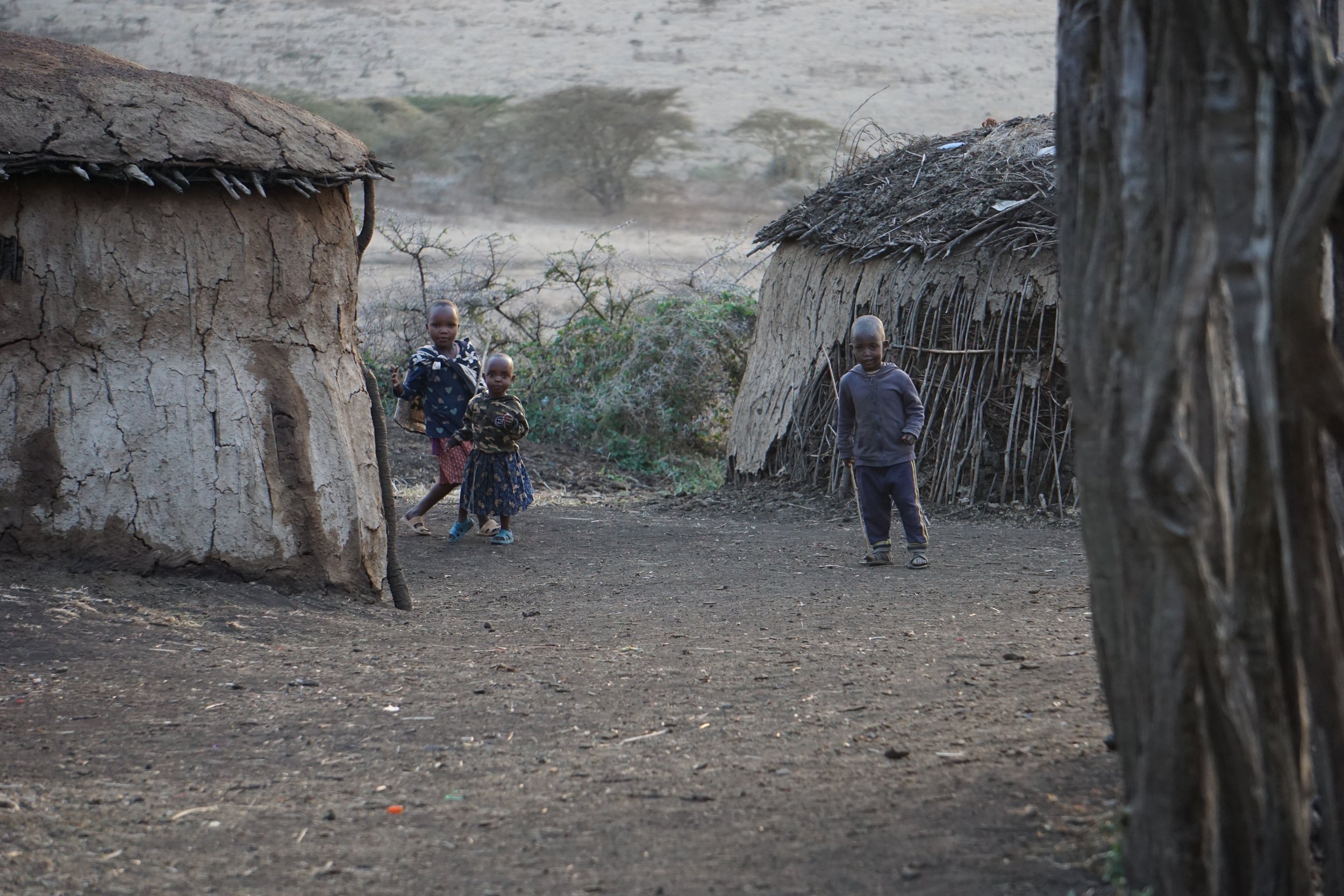Maasai: a Beekeeping, Cattle Herding People
While traveling the bumpy backroads, smooth speedways, and even deep in the savannah, there is one group that is hard to miss. While modernity swirls around you in most of Tanzania, time has seemed to remain at a standstill for one group, clinging to their heritage.
There are over 120 different tribes in Tanzania, among them are the well-known Nilotic ethnic group, the Maasai.
The Maasai are a pastoralist people who historically dominated the landscape of Tanzania - flowing with the wet and dry seasons, just like the African honey bees.
I became incredibly fascinated with the people, their livestock, and how they lived. The indigenous communities that I grew up alongside in Alaska - the Tlingit, Haida, and Tsimshian - didn’t manage livestock, or travel much. There is an abundance of fish, wildlife, and berries within feet of most villages. I had a deep curiosity to learn more about the Maasai, and their relationship with the land and their food.
Traditionally, the Maasai diet consisted of meat (cattle, sheep, and goat), milk, honey, broth with the bark of hearty plants, and raw blood from cattle.
The people lived in this way for centuries - until the Maasai "Emutai" of 1883–1902. This period began upon the arrival of European colonists and was marked by drought and epidemics of contagious bovine pleuropneumonia, rinderpest, and smallpox. The estimate by a German lieutenant in what was then northwest Tanganyika (Tanzania), was that 90% of cattle and half of wild animals perished from rinderpest. An estimated two thirds of the Maasai population died of disease and starvation during this period.
Beginning in the 1940’s, colonialists saw the Maasai - their grazing animals and hunting traditions - as detrimental to the environment, and displaced them from their pastoral homelands to create “parks.” Maasai were removed from the fertile lands between Mount Meru and Mount Kilimanjaro, and most of the fertile highlands near Ngorongoro.
I’m picturing a modern African version of the Scottish Highland Clearances.
In 1951, influence by Western writers such as Garrett Hardin (Tragedy of the Commons) and Melville Herskovits (Cattle Complex) inspired British colonialists to make policy which would remove all Maasai from the Serengeti National Park and relegate them to areas in and around the Ngorongoro Conservation Area (NCA).
The theory that the Maasai people and their small livestock herds is detrimental to the environment has been disproven by ecologists and anthropologists, such as Alan Savory, time and time again - but the idea is still deeply rooted in East African beliefs and politics.
Also in modern times – akin to the dualistic game laws affecting many indigenous tribes in North America, wildlife trophy hunting by outsiders is welcomed, while ceremonial and subsistence harvesting is outlawed.
In the 1960’s, the Maasai began to transition out of leather clothing (made from their livestock) and into the colorful weaves that we see them in today. Red plaid is popular, but other bright plaids and African designs are mixed in, as well. I saw one warrior totally rocking a pattern of hot pink flowers layered with plaids. Their beaded and metallic jingling and flashing jewelry remains unchanged, and is now a revenue source for the tribes – as well as village tours, which I’ll get to.
The diet began to transition around this time, as well. Maasia people were shown how to cultivate crops (a highly controversial move away from traditional means of harvesting food), and began to rely on foods such as maize and cabbage. However, farming in the NCA was banned from the mid 1970’s to the mid 1990’s, which pushed the Maasai into the monetary system to buy food. Before cash, wealth was solely determined by cattle and children (and still is, for the most part).
Let me clearly note that while I’m not in favor of the Maasai people being torn away from their grazing lands and land-based traditions, there are some rites that belong in the past. I stand with Agnes Pareyio, activist and founder of Tasaru Ntomonok, an organization committed to ending the traditions of child brides, and female circumcision and genital mutilation.
I have hope that this social movement can take hold, as the Maasai people have a history of justice and resistance. They stood against slavery, refused to condone human trafficking, and outsiders knew to leave these warrior people alone while looking for local partners to lure, or force, into the slave trade.
The Maasai people continue to fight for justice for their historical rights. They push back against the Tanzanian and Kenyan governments urging them to take up a more sedentary and urban lifestyle. Many Maasai have taken positions in government to advocate for their people.
I came across many community-based initiatives to keep the Maasai connected with the land, but also navigate through modern society and participate in the monetary system. Samson Beah is organizing a group of Maasai women to learn to keep bees and market the products of the hive, Maasai Honey can be found all over the country, many Maasai men double as guides and educate tourists about their people, and Jane Goodall just started a livestock (donkey) handling/wifery initiative for Maasai women. And as I mentioned – social justice warrior, Agnes Pareyio, working on women’s rights.
When the opportunity came to actually meet a group of Maasai, I couldn’t say no. I joined a small group of tourists to walk to a Maasai village near our camp in the NCA. I had… a lot of emotions. When we approached the huts, I started weeping - as that was all I could do with the flood of big, conflicting feelings. First of all – I have to admit to you, I hate being a “tourist.”
After spending the entirety of my 20’s in the cruise ship industry in Alaska, I began to detest people who saw me (the Alaskan) as an “other.” I was stared at, grouped, and poked and prodded with questions like I wasn’t a person, but an anomaly.
“But… what do you do in the winter???” was a question posed at least 127,000 times, in equal parts confusion, judgment, and pity.
{If you ever ask me this, in this tone, I will Roy-Kent-style loose it on you}
Anyhoo…
In my travels - Americans often standout. Not always, but commonly they are loud, un-mindful, unaware, drunk, and abrasive. As an aside, just days ago, I had to call security over to peel a large, drunk American tourist man off of a Dutch woman he was sexually harassing. No joke. It was terrible. And on my way to Tanzania (via Amsterdam) a flight attendant served the man (smashed up next to me) nine - YES NINE - 12 ounce cups of wine, plus a few whiskeys en route from Salt Lake City to Amserdam. He wouldn’t keep his body out of my personal space, and was slur-spit talking all over the side of my face (amidst a global pandemic of a virus transmitted by spit, mind you). Thanks, Delta.
If I could offer one travel tip for my fellow Americans, it would be to pack mindfulness and sobriety to bring with you on your journey.
Anyhooooo…
When I travel, I try my hardest to ooze into the background. I want to courteously observe from and distance - and deeply engage, when invited. I try hard to learn local phrases and taboos. I dress muted, yet respectfully pulled together. I try to blend, not offend. I want to be a traveler or a visitor, not a tourist.
When we strolled up to the village, I felt like a tourist. We didn’t get to meet any of the people, there was no happenstance, or casualness. There were tan-clad Americans and a spectacular performance. I got sucked right in - grabbed my camera and feverishly started changing lenses. After the adumu (or aigus), known to Westerners and “the jumping dance,” performance, we toured a hut, watched young men start a fire by rubbing sticks together (wicked hard, if you’ve ever tried it), and then were lead towards the “gift shop.”
As we approached the exit, I spotted a baby goat. I guess being driven to be part of something, instead of just gawking – combined with having a few hard days and pining for the comfort of my fur babies, I tried to grab it. It’s a goat, so it’s faster than me and bounced away, but was stopped by the stick of a very tall Maasai fellow in multiple layers of blue and purple plaid. He flicked the baby back in my direction and I scooped it up and buried my face in its soft, warm fur – wiping away my tears, and enjoying the background noise of the giggling children who thought it was HI-larious that I so desperately wanted to cuddle their goat.
My eyes weeped and my chest hurt because despite all the plan and pomp – it was a really, really beautiful, powerful, moving, and authentic ceremony. I felt guilty for feeling like we had crashed in on their private lives. I felt guilty that their lives were no longer private because of settlers and tourists. I felt guilty for 150 years of policies to enforce the division of Maasai people from their relationship with the land. And then I felt so inspired by their grit and resiliency - and that they continue to hold on to cattle herding, beekeeping, and their communities. Gratitude flooded over me – that I even had the opportunity to sit there and witness all of this. And then, of course, reverence for the shocking beauty of the people. So - is it OK to visit these places, as an *ugh* tourist?
The next day I remembered the longhouse in Saxman, Alaksa, a native village next to the town I lived in in my early 20’s. It was a spectacle for tourists, complete with Tlingit Master Carver, Ernie (who was hilarious, and happy to receive visitors). But it was also a community center after the cruise ships left. I went to weddings there, and other celebrations and gatherings. I also grew up going to potlatches and totem pole raisings at parks that tourists now frequent. But having tourists pass through doesn’t sully the authenticity of our important community spaces. Some Alaskan Natives are not a fan of tourists, or while people in general, and some are. Some Maasai people were happy to see us, and some weren’t.
Our human history is complex. Feelings around the historical and current effects of colonialism on indigenous people are deep, obscure, confusing, and troubling. But there is delight and joy in diving deep into your discomfort and curiosity, and seeing (not just looking at) the humans around you. Which is why it’s so important to me to let the bees point me in an assortment of directions around the world to keep learning about people, agriculture (and bees), and how we’re all intricately connected.
And yes, I did buy some jewelry and a carved elephant from the Maasai “gift shop,” with spending money that my Alaskan dad (who authentically and happily guided tourists for the better part of three decades) gave me for the trip.


